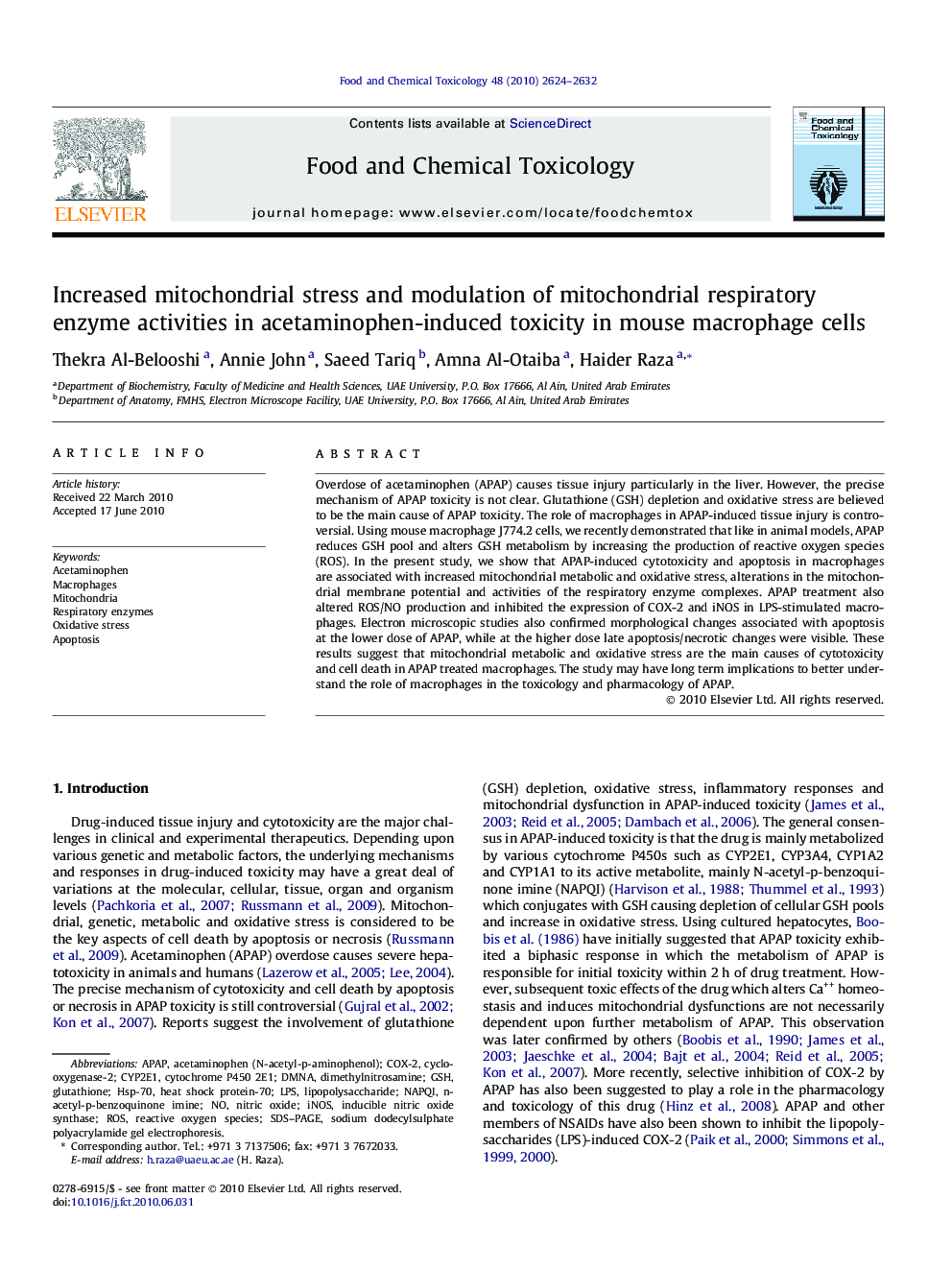| Article ID | Journal | Published Year | Pages | File Type |
|---|---|---|---|---|
| 2585565 | Food and Chemical Toxicology | 2010 | 9 Pages |
Overdose of acetaminophen (APAP) causes tissue injury particularly in the liver. However, the precise mechanism of APAP toxicity is not clear. Glutathione (GSH) depletion and oxidative stress are believed to be the main cause of APAP toxicity. The role of macrophages in APAP-induced tissue injury is controversial. Using mouse macrophage J774.2 cells, we recently demonstrated that like in animal models, APAP reduces GSH pool and alters GSH metabolism by increasing the production of reactive oxygen species (ROS). In the present study, we show that APAP-induced cytotoxicity and apoptosis in macrophages are associated with increased mitochondrial metabolic and oxidative stress, alterations in the mitochondrial membrane potential and activities of the respiratory enzyme complexes. APAP treatment also altered ROS/NO production and inhibited the expression of COX-2 and iNOS in LPS-stimulated macrophages. Electron microscopic studies also confirmed morphological changes associated with apoptosis at the lower dose of APAP, while at the higher dose late apoptosis/necrotic changes were visible. These results suggest that mitochondrial metabolic and oxidative stress are the main causes of cytotoxicity and cell death in APAP treated macrophages. The study may have long term implications to better understand the role of macrophages in the toxicology and pharmacology of APAP.
